|
|
|
Oxford University Press
|
This beautifully illustrated volume tells the story of Britain and its people over two thousand years, from the coming of the Roman legions to the present day. Encompassing political, social, economic, and cultural developments throughout the British Isles, the dramatic narrative is taken up in turn by ten leading historians who offer the fruits of the best modern scholarship to the general reader in an authoritative form, illuminating their text with carefully chosen pictures and maps. A vivid, sometimes surprising picture emerges of a continuous turmoil of change in every period, and the wider social context of political and economic tension is made clear. But consensus, no less than conflict, is a part of the story: in focusing on elements of continuity down the centuries, the authors bring out that special awareness of identity which has been such a distinctive feature of British society. By relating both these factors in the British experience, and by exploring the many ways in which Britain has shaped and been shaped by contact with Europe and the wider world, this landmark work brings the reader face to face with the past, and the foundations of modern British society. The new edition, the first for almost twenty years, brings the story into the twenty-first century, covering the changes to British society and culture during the Blair years and the invasion of Iraq and its aftermath. |
|
One of the most important religious sites in the world is largely hidden and rarely visited. It lies under the piazza in front of Milan's cathedral, and was uncovered by archaeologists only after World War II. It is part of the foundations of a fourth century cathedral from the time of Bishop Ambrose, the most powerful figure in the Christian West during Late Antiquity. To reach it, one must go inside the huge later cathedral and find a stairway by its western wall. After descending narrow stairs one reaches an eight-sided pool (piscine) that was used for total-immersion baptisms by Ambrose. There at dawn on Easter of 387, a cluster of people seeking baptism had gathered after an all-night vigil. Among those seeking baptism was Augustine, an African who had served as the imperial orator at the Milan court of the Emperor. Augustine would go back to his native Africa to become the bishop of Hippo and the most influential writer of the Christian West during the whole later course of the Middle Ages. Alongside him stood his son, his mother, his brother, and two of his pupils and academic colleagues. Nothing less than the future of the Western church was being formed in this cluster of talent and devotion. The Font of Life tells the story of this crucial event in the history of the Church. Beginning with the archaeology of Ambrose's Milan and the discovery of the baptistery, Garry Wills tells the story of the at times prickly relationship between Ambrose and Augustine and its importance for the future history of the Church, illuminating the scene of the baptism itself, along with the sources of its ritual, and introducing us to the company of the relatives and friends who greeted Augustine as he emerged from the pool. Appropriately, the book ends with a reflection on the later relationship between Augustine and Ambrose and the influence of the latter upon Augustine's later thought — which has been so seminal in the development of Christian thought ever since. |

|
Flora of North America Volume 27 is the first volume of three on the bryphytes (mosses, hornworts, and liverworts). Thirty-five authors treat the first half of the mosses, including 32 of the acrocarpous families, with introductory chapters on bryophyte morphology, the history of North America floristic bryology, and economic uses. The 84 species of sphagnum, of considerable economic importance, are fully treated. The number of taxa total 37 genera and 621 species. The taxa are fully described and keyed, illustrated with an estimated 136 panels of detailed line drawings of two or more species each, and geographic distributions are provided at the province and state level. This is the first installment of a full compilation of the mosses for North America since A. J. Grout's Moss Flora of North America of 60 years ago, and is sure to be an invaluable reference. The volume includes identification keys, descriptions, line drawings, and ecological characteristics for each of the species; distribution maps for the native and established species; and a list of the synonyms currently in use for the accepted names. |
|
Flora of North America: Volume 7 is the seventh volume of nineteen on dicotyledons to be published in the Flora of North America series. It treats more than 910 species classified among 114 genera in five families in the following two orders of the subclass Dilleniidae: Salicales (Willow order) and Capparales (Caper order). The families covered in volume 7 include Salicaceae, Capparaceae, Brassicaceae, Moringaceae, and Resedaceae. Each genus has representative species illustrated with a line drawing that, in combination with keys and descriptions, will facilitate identifications of these groups of plants. Even though many genera of mustards (Brassicaceae-nearly 100 genera with c. 750 species) are known in the flora area due to introduced species, many quite species-rich genera-Draba (140 species), Boechera (109 spp.), Physaria (90 spp.), Lepidium (40 spp.), Streptanthus (33 spp.), and Rorippa (23 spp.) — have many endemic species that are known from quite restricted areas within North America. The volume includes identification keys, descriptions, line drawings, and ecological characteristics for each of the species; distribution maps for the native and established species; and a list of the synonyms currently in use for the accepted names. The treatments, each of which has been extensively reviewed, are based on a combination of original observations and critical review of the literature. |
|
Flora of North America Volume 8 will be the seventh of 19 volumes on dicotyledons to be published in the Flora of North America North of Mexico series. It treats 680 species classified among 125 genera in 19 families The larger families covered in Volume 8 include Crassulaceae (Stonecrop family), Ericaceae (Heath family), Grossulariaceae (Currant family), Myrsinaceae (Myrsine family), Primulaceae (Primrose family), and Saxifragaceae (Saxifrage family). Each genus has representative species illustrated with a line drawing that, in combination with keys and descriptions, will facilitate identifications of these groups of plants. Some of the genera treated in this volume with the most species in the flora include: Ribes (Grossulariaceae) with 53 species; Dudleya and Sedum (Crassulaceae) with 26 and 41 species, respectively; Heuchera, Micranthes, and Saxifraga (Saxifragaceae) with 31, 45, and 25 species, respectively; and Arctostaphylos, Rhododendron, and Vaccinium (Ericaceae) with 62, 25, and 25 species, respectively. Additionally, ten of the 46 genera of Ericaceae are endemic to the flora area. The ongoing publishing project Flora of North America is the first comprehensive taxonomic guide to the extraordinary diversity of plant life covering our continent north of Mexico. This ground breaking scholarly series is a collaborative effort by researchers at more than 30 U.S. and Canadian botanical institutions. The Flora provides revisions of many plant groups and synthesizes the results from studies published in hundreds of research papers over the last three centuries. The series, based on herbarium, laboratory and field studies by hundreds of leading botanists and taxonomic authorities, is this century's premier tool for identifying, understanding, and conserving North America's floristic heritage. Flora of North America, with beautiful illustrations accompanying many species, is concise and easy to use. It is an indispensable resource for botanists, conservationists, ecologists, agronomists, foresters, range and land managers, and horticulturists. |

|
The Koran is a book apart, not only as Holy Scripture for Muslims, but as the supreme classic of Arabic literature. In its 114 Suras, or chapters, it comprises the total of revelations believed to have been communicated to the prophet Muhammad as a final expression of God's will and purpose for man. The revelations were received over a number of years, the first dating from AD 610, the last shortly before Muhammad's death in AD 632, and the definitive canon was established some twenty years later. The Koran is neither prose nor poetry but a unique fusion of both. In his attempt to convey the sublime rhetoric of the original, Professor Arberry has carefully studied the intricate and richly varied rhythms which — apart from the message itself — serve to explain the Koran's undeniable claim to rank among the greatest literary masterpieces of mankind. |

|
A rich American art-collector and his daughter Maggie buy in for themselves and to their greater glory a beautiful young wife and a noble husband. They do not know that Charlotte and Prince Amerigo were formerly lovers, nor that on the eve of the Prince's marriage they had discovered, in a Bloomsbury antique shop, a golden bowl with a secret flaw. When the golden bowl is broken, Maggie must leave the security of her childhood and try to reassemble the pieces of her shattered happiness. In this, the last of his three great poetic masterpieces, James combined with a dazzling virtuosity elements of social comedy, of mystery, terror, and myth. The Golden Bowl is the most controversial, ambiguous, and sophisticated of James's novels. |
|
The ancient civilization of Mesopotamia thrived between the rivers Tigris and Euphrates over 4,000 years ago. The myths collected here, originally written in cuneiform on clay tablets, include parallels with the biblical stories of the Creation and the Flood, and the famous Epic of Gilgamesh, the tale of a man of great strength, whose heroic quest for immortality is dashed through one moment of weakness. Recent developments in Akkadian grammar and lexicography mean that this new translation, complete with notes, a glossary of deities, place-names, and key terms, and illustrations of the mythical monsters featured in the text, will replace all other versions. |

|
Referencing classroom-based research, Focus on Oral Interaction looks at the contribution of teacher-student interaction and peer-peer interaction in classrooms, among school-age English language learners. Key areas covered include formulaic and creative language use, the different ways of scaffolding learning, the use of corrective feedback, the relationship between oral interaction and print literacy, as well as differences that learner aptitude and motivation make to language learning. Additional activities are provided to help teachers relate the content to their own teaching context. The book includes: Spotlight Studies, highlighting important research on oral interaction in classrooms. Classroom Snapshots, featuring descriptions of teachers and students engaged in different approaches to teacher-student interaction and peer-peer interaction in classrooms. Activities which encourage comparison and reflection, helping you to relate research and theory on oral interaction to your own teaching context. This book is part of the Oxford Key Concepts for the Language Classroom series, focusing on key topics for teaching English as a second or foreign language. These research-led instructional guides link the theories of second language acquisition and pedagogy with classroom practice, helping you to reflect on what needs to happen in the language classroom. |
|
This unique and authoritative dictionary contains over 1,100 of the most widely used proverbs in English, utilizing the latest research from Oxford Dictionaries to source them. This edition has been thoroughly revised and updated, broadening the cultural range of the proverbs selected, and covering sayings of international origins. With a strong emphasis on concisely explaining the meaning of the proverbs described, the dictionary also provides additional examples of usage, and includes a fascinating history for many entries. Arranged in A-Z order and with a useful thematic index, A Dictionary of Proverbs is ideal for browsing and perfectly suited for quick reference. Look up your old favourites, learn punchy new expressions to get your point across, and find the answer to that crossword clue. It is never too late to learn: find proverbs relevant to every aspect of life in this entertaining and informative collection. |
|
This new 2008 curriculum edition includes brand new chapters such as It's geography, Global warming and China, and is also packed full of the most up-to-the-minute topics such as the London Olympics and the 2007 floods. All this whilst retaining all the popular features teachers and students know and love. |
|
The only DP Physics resource developed with the IB to accurately match the new 2014 syllabus for both SL and HL, this completely revised edition gives you unrivalled support for the new concept-based approach to learning, the Nature of science. Understanding, applications and skills are integrated in every topic, alongside TOK links and real-world connections to truly drive independent inquiry. Assessment support straight from the IB includes practice questions and worked examples in each topic, alongside support for the Internal Assessment. Truly aligned with the IB philosophy, this Course Book gives unparalleled insight and support at every stage. *Accurately cover the new syllabus — the most comprehensive match, with support directly from the IB on the core, AHL and all the options *Fully integrate the new concept-based approach, holistically addressing understanding, applications, skills and the Nature of science *Tangibly build assessment potential with assessment support straight from the IB *Written by co-authors of the new syllabus and leading IB workshop leaders *Supported by a fully comprehensive and updated Study Guide and Oxford Kerboodle Online Resources *Also available as a fully online Course Book About the series The only DP resources developed directly with the IB, the Oxford IB Course Books are the most comprehensive core resources to support learners through their study. Fully incorporating the learner profile, resources are assessed by consulting experts in international-mindedness and TOK to ensure these crucial components are deeply embedded into learning. |

|
Oxford International Primary Computing is a complete six year primary computing course that takes a real-life, project based approach to teaching young learners the vital computing skills they will need for the digital world. Each unit builds a series of skills towards the creation of a final project, with topics ranging from designing your own robot to programming simple games. Within each stage, six key concepts are covered to give learners not only the skills they need to use technology effectively, but also the knowledge in how to do so creatively, safely and collaboratively: Control the computer — exploring the vital skills of logic and programming Working with text — from editing simple text to creating engaging outputs Handling Data — turning numbers in to useful and easy to understand data The Internet — how can we use the internet safely, and how can we trust what we read? Multimedia — harnessing technology creatively for graphics, animations, movies and more Computing in society — asking big questions about real life applications of technology, from social media safety to the history of the world wide web For the teacher, the Teacher's Guides provide step-by-step guidance for each lesson, as well as comprehensive information on the knowledge, software and skills required to provide reassurance for specialist and non-specialist teachers alike. |
|
Oxford International Primary Computing is a complete six year primary computing course that takes a real-life, project based approach to teaching young learners the vital computing skills they will need for the digital world. Each unit builds a series of skills towards the creation of a final project, with topics ranging from designing your own robot to programming simple games. Within each stage, six key concepts are covered to give learners not only the skills they need to use technology effectively, but also the knowledge in how to do so creatively, safely and collaboratively: Control the computer — exploring the vital skills of logic and programming Working with text — from editing simple text to creating engaging outputs Handling Data — turning numbers in to useful and easy to understand data The Internet — how can we use the internet safely, and how can we trust what we read? Multimedia — harnessing technology creatively for graphics, animations, movies and more Computing in society — asking big questions about real life applications of technology, from social media safety to the history of the world wide web For the teacher, the Teacher's Guides provide step-by-step guidance for each lesson, as well as comprehensive information on the knowledge, software and skills required to provide reassurance for specialist and non-specialist teachers alike. |
|
Oxford International Primary Computing is a complete six year primary computing course that takes a real-life, project based approach to teaching young learners the vital computing skills they will need for the digital world. Each unit builds a series of skills towards the creation of a final project, with topics ranging from designing your own robot to programming simple games. Within each stage, six key concepts are covered to give learners not only the skills they need to use technology effectively, but also the knowledge in how to do so creatively, safely and collaboratively: Control the computer — exploring the vital skills of logic and programming Working with text — from editing simple text to creating engaging outputs Handling Data — turning numbers in to useful and easy to understand data The Internet — how can we use the internet safely, and how can we trust what we read? Multimedia — harnessing technology creatively for graphics, animations, movies and more Computing in society — asking big questions about real life applications of technology, from social media safety to the history of the world wide web For the teacher, the Teacher's Guides provide step-by-step guidance for each lesson, as well as comprehensive information on the knowledge, software and skills required to provide reassurance for specialist and non-specialist teachers alike. |
|
Oxford International Primary Computing is a complete six year primary computing course that takes a real-life, project based approach to teaching young learners the vital computing skills they will need for the digital world. Each unit builds a series of skills towards the creation of a final project, with topics ranging from designing your own robot to programming simple games. Within each stage, six key concepts are covered to give learners not only the skills they need to use technology effectively, but also the knowledge in how to do so creatively, safely and collaboratively: Control the computer — exploring the vital skills of logic and programming Working with text — from editing simple text to creating engaging outputs Handling Data — turning numbers in to useful and easy to understand data The Internet — how can we use the internet safely, and how can we trust what we read? Multimedia — harnessing technology creatively for graphics, animations, movies and more Computing in society — asking big questions about real life applications of technology, from social media safety to the history of the world wide web For the teacher, the Teacher's Guides provide step-by-step guidance for each lesson, as well as comprehensive information on the knowledge, software and skills required to provide reassurance for specialist and non-specialist teachers alike. |
|
Oxford International Primary Computing is a complete six year primary computing course that takes a real-life, project based approach to teaching young learners the vital computing skills they will need for the digital world. Each unit builds a series of skills towards the creation of a final project, with topics ranging from designing your own robot to programming simple games. Within each stage, six key concepts are covered to give learners not only the skills they need to use technology effectively, but also the knowledge in how to do so creatively, safely and collaboratively: Control the computer — exploring the vital skills of logic and programming Working with text — from editing simple text to creating engaging outputs Handling Data — turning numbers in to useful and easy to understand data The Internet — how can we use the internet safely, and how can we trust what we read? Multimedia — harnessing technology creatively for graphics, animations, movies and more Computing in society — asking big questions about real life applications of technology, from social media safety to the history of the world wide web For the teacher, the Teacher's Guides provide step-by-step guidance for each lesson, as well as comprehensive information on the knowledge, software and skills required to provide reassurance for specialist and non-specialist teachers alike. |
|
Oxford International Primary Computing is a complete six year primary computing course that takes a real-life, project based approach to teaching young learners the vital computing skills they will need for the digital world. Each unit builds a series of skills towards the creation of a final project, with topics ranging from designing your own robot to programming simple games. Within each stage, six key concepts are covered to give learners not only the skills they need to use technology effectively, but also the knowledge in how to do so creatively, safely and collaboratively: Control the computer — exploring the vital skills of logic and programming Working with text — from editing simple text to creating engaging outputs Handling Data — turning numbers in to useful and easy to understand data The Internet — how can we use the internet safely, and how can we trust what we read? Multimedia — harnessing technology creatively for graphics, animations, movies and more Computing in society — asking big questions about real life applications of technology, from social media safety to the history of the world wide web For the teacher, the Teacher's Guides provide step-by-step guidance for each lesson, as well as comprehensive information on the knowledge, software and skills required to provide reassurance for specialist and non-specialist teachers alike. |
|
Oxford International Primary Geography is a complete six year primary geography course that provides an engaging introduction to the subject. Using real life examples from around the globe, the course covers key aspects of both human and physical geography, from the basics of mapping to more complex topics such as the pros and cons of ecotourism and how to meet the resource needs of the world's growing population. Additional Workbooks provide students with the opportunity for further study in the classroom or at home, including suggested research topics and cross-curricular projects. For the teacher, the Teacher's Guide provides step-by-step guidance for each lesson, as well as background knowledge and geographical information for specialist and non-specialist teachers alike. |
|
Oxford International Primary Geography is a complete six year primary geography course that provides an engaging introduction to the subject. Using real life examples from around the globe, the course covers key aspects of both human and physical geography, from the basics of mapping to more complex topics such as the pros and cons of ecotourism and how to meet the resource needs of the world's growing population. Additional Workbooks provide students with the opportunity for further study in the classroom or at home, including suggested research topics and cross-curricular projects. For the teacher, the Teacher's Guide provides step-by-step guidance for each lesson, as well as background knowledge and geographical information for specialist and non-specialist teachers alike. |
|